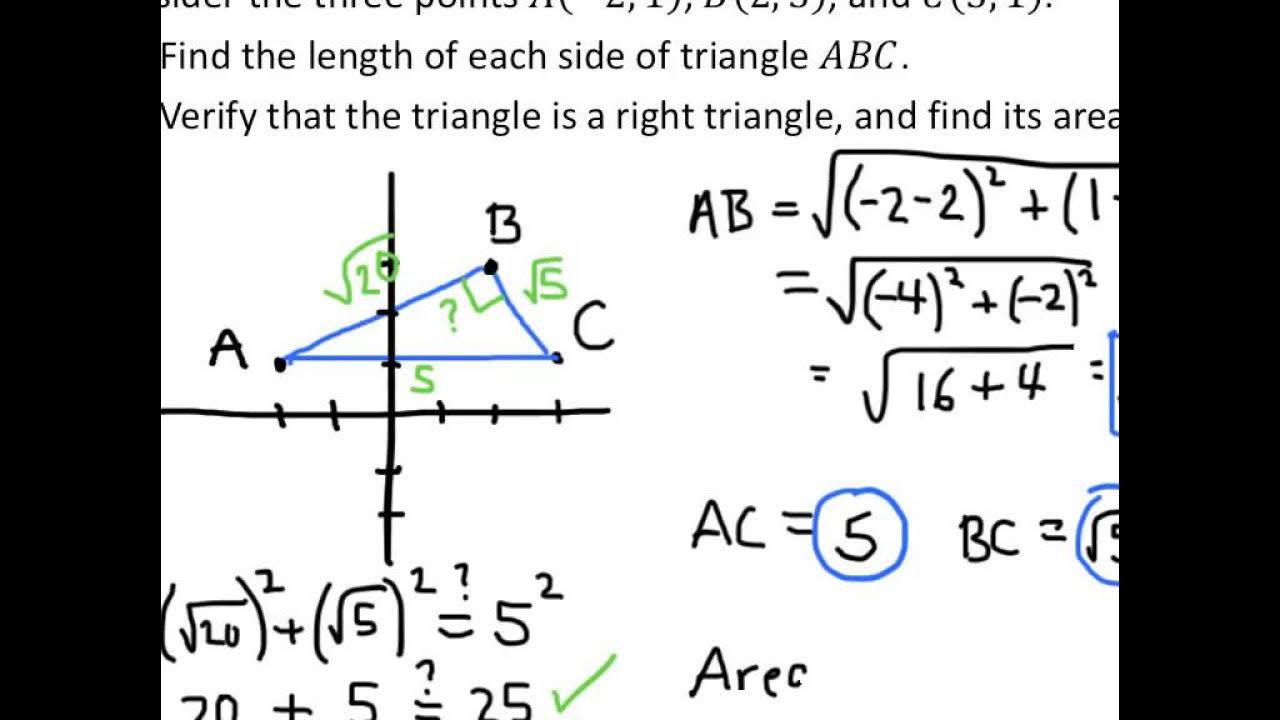Pembelajaran luas segitiga
Summary
TLDRIn this educational video, the speaker introduces the concept of calculating the area of a triangle. Rather than just memorizing formulas, the video encourages students to discover the formula through exploration. The speaker uses a practical example of a rectangle to help students understand how the area of a triangle is half of that of a rectangle. The key takeaway is that the area of a triangle can be found using the formula: area = 1/2 × base × height. The video is designed to engage students in active learning and understanding the process behind the formula.
Takeaways
- 😀 The importance of understanding the process of deriving the area formula for a triangle rather than just memorizing it.
- 😀 Students should be guided to discover patterns and formulas through exploration, not just rote learning.
- 😀 The script begins with a greeting and introduces the aim of teaching about the area of a triangle.
- 😀 Before discussing triangles, the script revisits the area of a rectangle, reinforcing prior knowledge.
- 😀 A visual aid is used to create a rectangle and demonstrate how the area of a triangle can be derived from it.
- 😀 The dimensions of the rectangle (12 cm by 6 cm) are used to illustrate the concept of area.
- 😀 The rectangle is divided into smaller squares to help students better visualize the area.
- 😀 The script shows that when the rectangle is cut in half, it forms two triangles, which suggests that the area of a triangle is half of the area of the rectangle.
- 😀 The formula for the area of a triangle is derived: Area = 1/2 * base * height.
- 😀 The final part encourages students to apply the concept and calculate the area of the triangle presented in the video.
- 😀 The video concludes with a positive note encouraging learning and invites students to share their answers in the comments section.
Q & A
What is the main focus of the lesson in the script?
-The main focus of the lesson is teaching how to calculate the area of a triangle by understanding its relationship to the area of a rectangle.
What method does the instructor use to help students understand the area of a triangle?
-The instructor uses a visual method involving a rectangle, showing how cutting it in half results in a triangle, helping students understand that the area of a triangle is half of a rectangle's area.
What is the formula for the area of a triangle as explained in the script?
-The formula for the area of a triangle is 'half of the base times the height', which is written as 1/2 * base * height.
How does the instructor explain the concept of 'base' and 'height' in a triangle?
-The instructor explains that in a triangle, the 'base' is the bottom edge, and the 'height' is the perpendicular distance from the base to the top point of the triangle.
Why does the instructor emphasize understanding the process of finding the area rather than just memorizing the formula?
-The instructor emphasizes understanding the process so that students learn how to discover patterns and gain a deeper comprehension of why the formula for the area of a triangle works, rather than just memorizing it.
What prior knowledge does the instructor assume students already have before starting the lesson?
-The instructor assumes that students have already learned how to calculate the area of a rectangle, as this knowledge is crucial for understanding how to calculate the area of a triangle.
How is the area of a rectangle used to explain the area of a triangle?
-The instructor demonstrates by showing a rectangle, then cutting it in half to form two triangles. This visual aids in understanding that the area of a triangle is half the area of the rectangle.
What is the importance of the 'half' in the triangle area formula?
-The 'half' is important because a triangle takes up half of the area of a rectangle with the same base and height. This explains why the area of a triangle is calculated as half of the base times the height.
What does the instructor suggest students do to better understand the concept of area?
-The instructor suggests that students engage with the material by visualizing and manipulating shapes, such as cutting a rectangle to create a triangle, in order to better understand how the area formula is derived.
What is the instructor's call to action at the end of the lesson?
-The instructor encourages students to calculate the area of the triangle presented in the video and to write their answers in the comment section, prompting them to practice the concept learned.
Outlines

This section is available to paid users only. Please upgrade to access this part.
Upgrade NowMindmap

This section is available to paid users only. Please upgrade to access this part.
Upgrade NowKeywords

This section is available to paid users only. Please upgrade to access this part.
Upgrade NowHighlights

This section is available to paid users only. Please upgrade to access this part.
Upgrade NowTranscripts

This section is available to paid users only. Please upgrade to access this part.
Upgrade NowBrowse More Related Video

College Algebra Examples: Applications of the Distance and Midpoint Formulas

MATEMATIKA Kelas 8 - Teorema Phytagoras | GIA Academy

Lingkaran Dalam Segitiga - Matematika SMA Kelas XI Kurikulum Merdeka

Tembereng Lingkaran - Matematika Kelas XI Kurikulum Merdeka

Algoritma dan Pemrograman (Scratch : If )

Teorema Pythagoras Kelas 8 Semester 2
5.0 / 5 (0 votes)